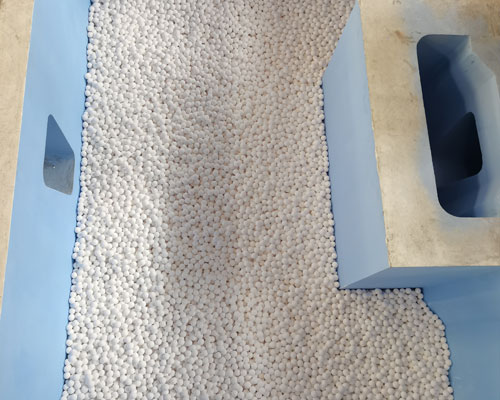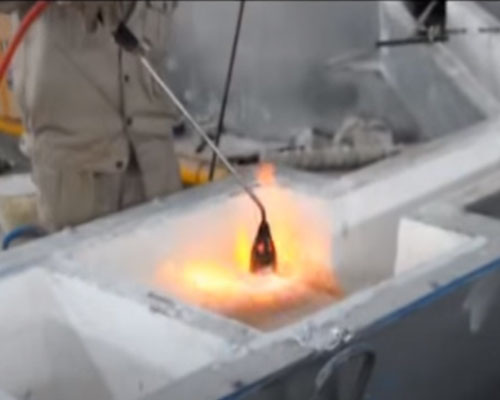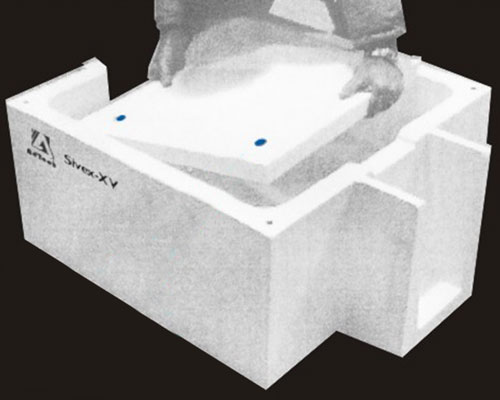Using mechanical filtration, when the metal melt passes through the filter media, it has a mechanical barrier to non-metallic inclusions. In addition, the filter media also has an adsorption effect on the inclusions. Generally, the smaller the gap and the greater the thickness of the filter media, the lower the flow rate of the aluminum liquid, and the better the mechanical filtration effect.
According to different filter media, the aluminum liquid filtration method can be divided into the following types.
Mesh Filtering Method
This method allows the melt to pass through a glass or heat-resistant wire mesh filter, and the slag is mechanically blocked and separated from the melt. This has a significant effect on removing flaky oxide film and large slag inclusions. But it can only filter out the slag than the grid size, so the purification effect is poor. The mesh filter is easy to break, the service life is short, and it needs to be replaced frequently.
Deep Bed Filtration
The deep bed filter is a packed bed composed of filter media of different materials (flux, refractory, ceramics, etc.) and different shapes (spherical, block, granular, sheet). Sometimes liquid flux is also used as a filter medium. In addition to the mechanical barrier effect of the packed bed, there is also adsorption, dissolution, or chemical interaction between the filter medium and the slag. The advantage of this method is that there is a large contact area between the melt and the filter medium, and the filtering and slag removal effect is better than the mesh filter method. Generally, the thicker the filter layer, the smaller the particle size of the medium, and the better the filtering effect. However, if the particle size is too small, it will affect the melt flow rate and reduce the productivity.

Rigid Microporous Filtration Method
There are two types of rigid microporous filters: ceramic microporous tube filters and ceramic filter plates.
Ceramic Microporous Tube Filters
The ceramic microporous tube filter is made of corundum sand of a certain particle size and low-silicon glass as a binder. It is formed by pressing, drying at low temperature, and sintering at high temperature. It is a rigid filter with uniform pores. When the metal melt containing the slag is passed, the slag is separated from the metal melt due to the friction, adsorption, inertial sedimentation and other effects of the pipe wall, and the metal melt can pass through the micropores. This method can filter out particulate inclusions smaller than the pore size, and is one of the most reliable filtering methods. The disadvantage is that the filtration cost is high, and sometimes the grain refiner may be trapped.

Ceramic Foam Filter Plates
The ceramic foam filter plate ( CFF) is a sponge-like porous ceramic product plate, it is made of alumina, chromium oxide, etc. Ceramic foam filter has a unique three-dimensional network skeleton and interpenetrating pore structure, and its thickness is about 20~60mm. PPI (pores per inch) is the number of holes per inch of length to express its specifications. The ceramic filter plate is brittle and must be cleaned carefully after installation.

